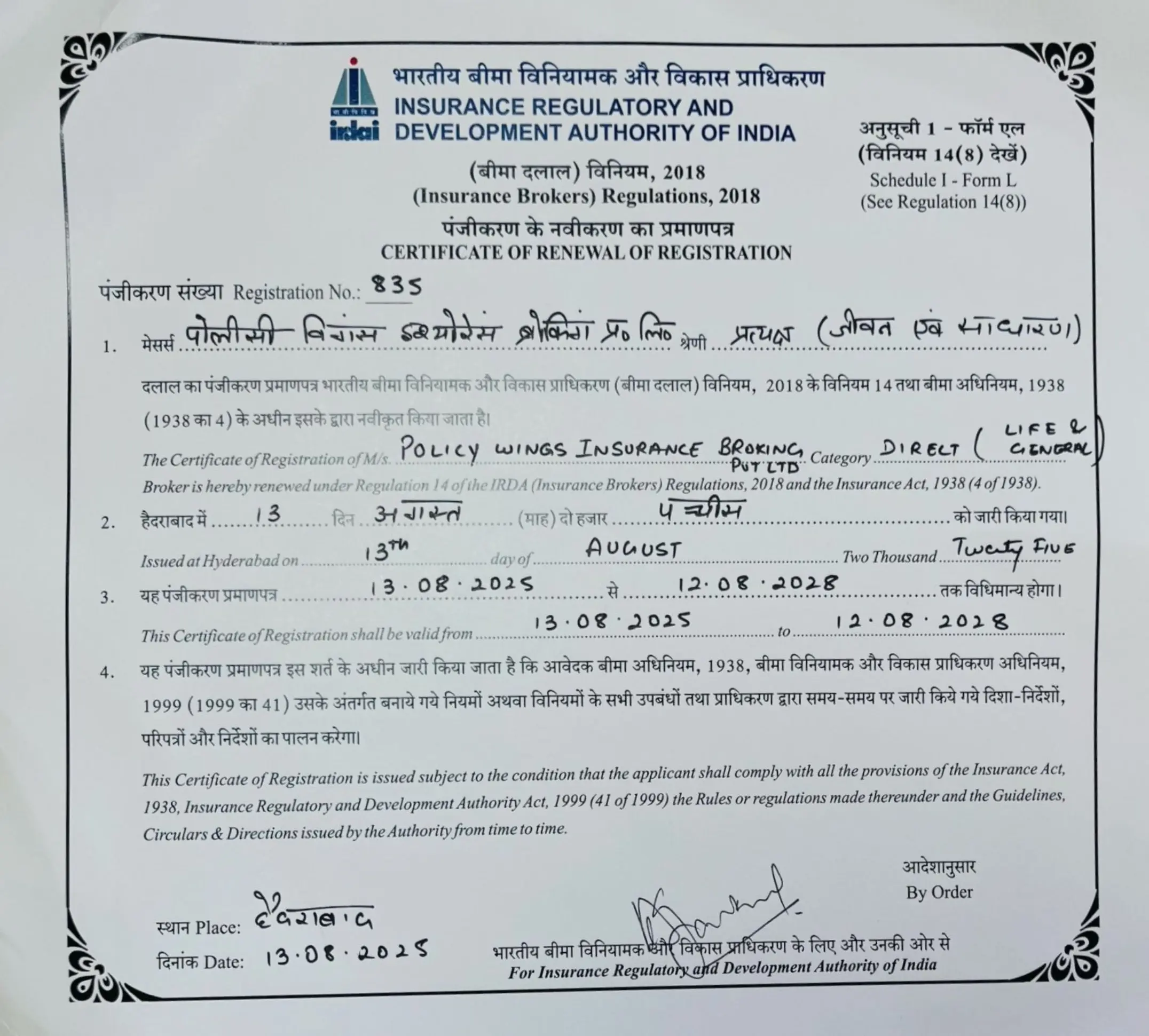Homepage » Health Insurance » Health Insurance Plans » Top Up Health Insurance
Top-Up Health Insurance Plans
In today’s world, health insurance has become an essential aspect of financial planning. It safeguards individuals and families from the escalating costs of medical treatments. While a basic health insurance policy provides coverage up to a certain limit, unforeseen medical emergencies can sometimes exceed these limits. This is where top-up health insurance plans come into play, offering an additional layer of financial protection. In this article, we will get into the intricacies of top-up health insurance plans, analysing their features, benefits, and how they contribute to comprehensive healthcare coverage.
What is a Top-Up Health Insurance Plan?
A top-up health insurance plan is a supplementary insurance policy designed to provide extra coverage beyond the existing threshold of a primary health insurance plan. It is particularly beneficial when an individual faces medical expenses that surpass the sum insured by their regular health insurance policy. The top-up plan kicks in once the pre-defined deductible or threshold is crossed, offering coverage for expenses that exceed this threshold.
How Does Top-Up Health Insurance Work?
To understand how top-up health insurance works, let’s consider an example. To illustrate, suppose you purchase a top-up health plan with a coverage amount of ₹ 10 lakhs and a deductible threshold set at ₹ 3 lakhs. In this scenario, any claims that fall within the range of ₹ 3 lakhs would not be covered by the plan.
However, if you encounter a medical expense of ₹ 4 lakhs in a single claim, the top-up policy would contribute the additional amount which is ₹ 1 lakh in this case, towards the claim. Essentially, the top-up plan provides coverage for expenses that go beyond the deductible, ensuring comprehensive protection without an exorbitant increase in premium.
Difference between Top-Up and Super Top-Up Health Plans
It’s crucial to distinguish between top-up and super top-up health plans. While both provide additional coverage, they differ in how they consider cumulative expenses. A top-up plan considers individual claims, meaning a single claim must surpass the deductible to trigger coverage.
On the other hand, a super top-up plan considers the cumulative total of all claims made during a policy year. This can be especially advantageous when multiple smaller claims collectively exceed the deductible, providing coverage for the surplus amount.
Highlights of Top-Up Health Insurance Plans
1. Cost-Effective Enhancement:
Top-up plans offer extended coverage at a fraction of the cost of increasing the sum insured by your primary policy. The premium amount for a top-up health insurance plan is very minimal making it the best tool to secure oneself and family against uncertain events.
2. Flexibility:
A top-up health insurance plan can be combined with various health insurance policies, allowing you to customise your coverage according to your needs.
3. No Medical Check-up:
Many top-up plans don’t require a fresh medical examination if you’re renewing them regularly.
4. Tax Benefits:
Premiums paid for top-up plans are eligible for tax deductions under Section 80D of the Income Tax Act.
Who Should Buy a Top-Up Health Plan?
Top-up health insurance plans are beneficial for a wide range of individuals, including:
1. Young Professionals:
Those who are in the early stages of their careers might not require extensive coverage but want protection against major unforeseen medical expenses.
2. Families:
Families with a primary health insurance policy can enhance their coverage with a top-up plan, ensuring everyone’s well-being.
3. Senior Citizens:
While senior citizens can also opt for top-up plans, they need to carefully consider the deductible and premium amount.
Key Features of a Top-Up Health Insurance Plan
1. Seamless Integration with Primary Health Coverage:
Top-up health insurance plans offer a convenient pathway to fortify your primary health insurance policy. This supplementary coverage augments your existing protection, ensuring that substantial medical expenses remain manageable.
2. Additional Coverage:
As previously discussed, a fundamental aspect of top-up health coverage is the mandatory deductible component. Only after fulfilling this requirement can you tap into the supplementary coverage. Thus, the enhanced protection comes into play once your base sum assured has been exhausted. This unique structure provides an added advantage to your primary insurance, offering an extra layer of security against unforeseen medical costs.
3. Comprehensive Coverage for Medical Events:
Typically, top-up health insurance policies extend coverage to a range of medical events. These include in-patient hospitalisation, as well as pre and post-hospitalisation expenses. Pre-hospitalisation coverage is extended for up to 60 days, while post-hospitalisation coverage spans 90 days. The policy may encompass various other aspects such as coverage for day-care procedures, expenses related to organ transplantation, emergency ambulance costs, and even domiciliary treatments.
4. Strategic Advantage for Early Enrolment:
For individuals under the age of 55, enrolling in top-up plans often comes without the necessity for additional medical examinations. This aspect underscores the strategic advantage of acquiring such coverage at a younger age. Doing so enables you to harness the benefits of comprehensive coverage for an extended duration, safeguarding your health and financial well-being effectively.
5. Expansive Coverage, Minimal Restrictions:
Typically, top-up health insurance plans are characterised by their flexibility and inclusivity. Unlike certain health plans, they commonly do not impose restrictions or sub-limits on medical expenses like doctor’s fees or room rent. This flexibility ensures that you can access medical care without being hindered by financial constraints.
6. Family-Centric Coverage:
The appeal of top-up health insurance extends to the family sphere as well. Some plans offer the advantage of a family discount, encompassing coverage for your spouse, children, parents, and even in-laws. This family-oriented approach furthers the holistic protection provided by the top-up plan.
7. Financial Incentives:
One of the noteworthy financial incentives associated with top-up health insurance is the eligibility for tax rebates. Premium payments made towards top-up plans can be claimed for a tax rebate under Section 80D of the Income Tax Act. This dual benefit of enhancing coverage while also enjoying potential tax savings makes top-up health insurance a compelling option.
Thus, top-up health insurance plans have emerged as a strategic tool to amplify the protective envelope of primary health coverage. Their ability to seamlessly integrate, provide additional coverage after deductible fulfilment, and offer comprehensive protection against various medical events makes them an invaluable tool for healthcare planning. As families and individuals search for an apt health insurance plan, top-up plans have emerged as an important financial planning tool, aiming to secure both the physical well-being and financial stability of individuals and their families.
Benefits of a Top-Up Health Insurance Plan
1. Economical Advantage:
Top-up plans furnish significant coverage enhancements without imposing a substantial spike in premium costs.
2. Expanded Safeguard:
These plans serve as a safety buffer, shielding individuals from unforeseen medical expenditures that exceed the confines of their standard policy’s coverage ceiling.
3. Tax Efficiency:
The premium payments made towards top-up plans qualify for tax deductions, presenting an avenue to curtail your overall tax obligations.
4. Tailored Protection:
Top-up plans grant the flexibility to fine-tune coverage in alignment with your prevailing health insurance, thereby creating personalised and optimal coverage.
5. Cumulative Bonus:
If a top-up plan is not utilised during one policy year for each claim-free year cumulative bonus is accumulated.
What’s covered in Top-Up Health Insurance?
The following is a list of things that are typically covered under a Top-up health insurance plan:
1. Hospitalisation Expenses:
The cost of hospitalisation is covered under a top-up health insurance plan. The hospitalisation expenses include all In-patient hospitalisation costs, including room charges, doctor’s fees, and surgery expenses.
2. Pre and Post-Hospitalisation Costs:
A top-up health insurance plan not only covers the hospitalisation expenses but also includes medical expenses incurred before and after hospitalisation, including diagnostic tests and follow-up treatments.
3. Day-care Procedures:
A top-up insurance plan covers day-care procedure medical expenses. Daycare procedures are those surgeries that don’t require extended hospital stays but are still essential.
4. Ambulance Charges:
A top-up insurance plan covers the expenses related to emergency ambulance services.
5. Organ Transplantation:
Costs and expenses associated with organ transplantation surgeries are covered under a top-up health insurance plan. However, it depends on the insurance provider, it is important to understand the terms and conditions related to the same.
What’s Not Covered?
The following is a list of exclusions of the top-up health insurance plan. While the specifics can vary between insurance providers, common exclusions include:
1. Pre-Existing Diseases:
A top-up health insurance plan will not cover the expenses related to pre-existing medical conditions that are exclusively mentioned in the policy document. Alternatively, these pre-existing diseases might not be covered initially.
2. Waiting Period:
Under a top-up health insurance plan some treatments have a waiting period during this period any claims pertaining to the same are not accepted.
3. Cosmetic Procedures:
A top-up health insurance plan usually does not cover the cosmetic procedures that are done as a part of Aesthetic treatments.
4. Alternative Treatments:
A top-up health insurance plan does not cover alternate treatments like Ayurveda, naturopathy, etc., however, it might differ from not being covered.
Eligibility Criteria for Top-Up Medical Insurance Plan
The eligibility criteria for top-up health insurance plans are typically straightforward:
1. Age:
Most plans have a minimum entry age of 18 years and a maximum age limit, often up to 65 or 70 years.
2. Primary Policy:
You generally need to have an existing health insurance policy to be eligible for a top-up plan.
Role of Top-Up Plans in Health Insurance
Top-up plans play a significant role in enhancing the overall coverage provided by health insurance policies, especially for senior citizens. Senior citizen health insurance plans might come with limited coverage due to their age. In such cases, a top-up plan can bridge the gap and provide additional financial protection. For instance, if a senior citizen’s primary health insurance has a low sum insured and limited coverage, a top-up plan can ensure that they are adequately protected against substantial medical expenses without the need for an expensive policy.
How to File a Claim for a Top-Up Health Plan?
The process of filing a claim for a top-up health plan is quite similar to that of a regular health insurance policy. There are two main methods for claim settlement:
1. Cashless Claim:
As the name suggests, under this claim the policyholder does not have to pay the amount. The insurance provider directly settles the bill with the concerned hospital. The following is the procedure for the cashless claim:
○ Inform:
The first step under a cashless claim is to inform the insurance provider as soon as possible about the hospitalisation or treatment.
○ Pre-Authorisation:
If availing of cashless treatment, the hospital needs to send a pre-authorisation request to the insurance company.
○ Approval:
Once approved, the insurance company settles the bills directly with the hospital.
2. Reimbursement Claim:
As the name suggests, under this claim the policyholder settles the bill with the hospital and then in due course reimburses the amount from the insurance company. The following is the procedure for reimbursement claim:
○ Pay and Preserve Bills:
The policyholder pays the hospital bills and then claims the amount from the insurance company. However, it is important to keep all the original receipts, bills, and medical reports.
○ Submit Documents:
The policyholder is required to submit all the necessary documents, including claim forms, bills, medical reports, discharge summaries, etc., to the insurance company in order to receive the reimbursement amount.
○ Claim Settlement:
Once all the documents are verified by the insurance company, it reimburses the amount to the policyholder.
Documents Needed to File a Claim
The following is the list of documents that a policyholder must submit to the insurance company in order to file a claim:
1. Duly filled claim form
2. Hospitalisation discharge summary
3. Original hospital bills and receipts
4. Doctor’s prescription and medical reports
5. Any other documents requested by the insurance company
List of 10 Popular Top-Up Health Insurance Plans
| Name of the plan | Features |
| Future Generali Advantage Top-up |
|
| ICICI Lombard Health Booster |
|
| SBI Arogya Top-up Policy |
|
| Star Super Surplus Policy |
|
| Tata AIG Medicare Plus |
|
To Sum Up!
Top-up health insurance plans serve as a crucial tool for individuals and families to enhance their coverage and financial security. They bridge the gap between the coverage provided by regular health insurance policies and the actual medical expenses that might arise. By understanding the key features, benefits, and claim procedures associated with top-up plans, individuals can make informed decisions about their healthcare coverage, ensuring that unexpected medical emergencies do not become financial burdens. It’s essential to evaluate different insurance providers, compare plans, and assess your own medical needs to choose a top-up health insurance plan that best suits your requirements.
Frequently Asked Questions
Individuals with an existing health insurance policy can buy a top-up plan. There might be age restrictions depending on the insurance provider.
Generally, no. Most insurance providers require you to have a basic health insurance policy to be eligible for a top-up plan.
Assess your regular medical expenses, financial capability, and the coverage provided by your primary policy to decide on an appropriate deductible amount.
Maternity coverage is usually not included in top-up plans. It's advisable to check with the insurance provider for specific coverage details.
Some insurance providers might allow you to change the deductible amount during policy renewal. However, it's better to choose the deductible carefully at the outset.
Leading Health Insurance Companies





Latest Blogs
Introduction While buying or renewing car insurance, you would surely come across two very common terms: Zero Depreciation and...
Introduction In India, getting insurance for your car is non-negotiable. With so many plans and so many add-ons available, it...
Introduction Everyone deserves healthcare but sadly, with the medical expenses rising so fast in India, not everyone can afford...
Introduction Do you think that buying life insurance means having to go through complicated policies and paperwork and paying...
Introduction You don’t buy a car insurance just fulfil a legal requirement. The repair costs have really increased, spare...
Introduction You can’t predict life but it’s always possible to secure the financial future of your family with life...
Introduction You have waited so long to finally purchase that car, saved for it and checked all those reviews....
Introduction Upon buying insurance, you will notice different short forms in your policy documents that might confuse you. One...









